"I'm a huge, huge fan of science fiction and horror," reveals artist and games designer Glen Schofield , speaking to SFX in person at SCI-FI-LONDON . "My first degree is in art and I started in Manhattan as a science fiction artist. I watch all the horror stuff from Korea and the Netherlands and wherever, and I'm influenced by them all. But I didn't want to make them again, I wanted to do something different. There are plenty of horror survival games out there but it doesn't make sense to me that the concepts haven't been put together, and although there are homages to other things in Dead Space, this is a new concept: the sci-fi survival game."
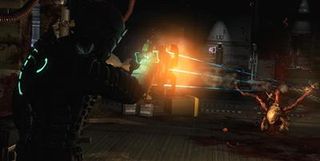
We review Dead Space - which casts you as engineer Isaac Clarke (see the SF references in his name?) trapped on an infested mining ship and having to turn his tools into weapons to defend himself - in issue 176 on sale Wednesday 22 October. The game will be released into stores by Halloween this year for the Xbox360, PlayStation 3 and PC, by EA .
There's also a comic, scripted by Antony Johnston , which has been developed in tandem with the game script. "My influences have been classic horror stuff," explains Johnston. "My emphasis is on character development and mystery, bringing out the drama through character interaction: maintaining the mystery and secrets! I like the more thoughtful horror movies like Halloween, Alien. Slow burning, tense, atmospheric stories. The Thing has been an influence on everyone, that sense of paranoia - it's something I've tried to bring to the dialogue in the game. A sense of suffocating tension."

The game itself has an interesting combat mechanic in that instead of just shooting people till they pop, here you're encouraged to chop their limbs off. The alien bugs' limbs are ripe for dismemberment with your trusty mining laser, and we saw examples of persistent blighters crawling towards you with their arms after you sliced their legs off. There are opportunities to be resourceful, given that you have things like a stasis gun in your arsenal which you can use to slow charging creatures and to help solve puzzles. There's also a gravity gun.
Glen Schofield: "He starts off with a little cutting tool, he isn't in a beefed-up suit yet. I wanted him to be like that; when you see a horror movie, it's usually normal people - they don't start off being guys in the army! And I wanted that sense. You can upgrade later on, but at the start he's just an engineer. I'm proud of the dismemberment angle - that's from the horror side of things. You've got to come up with something that still feels visceral but fits in the SF world, and the dismemberment feels like that! And zero-G is great, it feels kind of lonely and kind of oppressive, it feels like you're floating, not like some kind of jetpack."
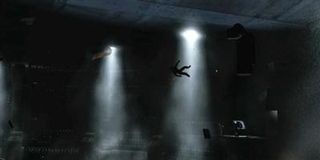
The locations we've seen - which include that innovative zero-G level - are dark and creepy. Antony Johnston: "I'll jump as much as anyone when something comes out of a dark corner, and I do love the buckets of blood occasionally, but for lasting effect it has to be that kind of paranoid mystery where nobody knows who's friend or foe - for instance Ash's reveal in Alien. You recover quickly from a jump, but the seed of a horrific idea stays with you longer. It is hard to bring that to a game - a lot of that is in level design."
"But I've tried to bring ambiguity to the characters too," continues Johnston. "You have to remember that this is a repair team, they're engineers, they have no idea what they're getting into - this is what good horror does, takes an ordinary person and puts them in an unnatural environment, and let's see how they get through it... if they can."
Sign up to the SFX Newsletter
Get sneak previews, exclusive competitions and details of special events each month!
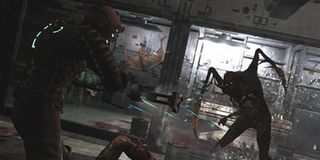
Johnston warms to his subject: "I bemoan the fact that at a lot of game dialogue and game stories used to be pretty awful. That's down to often it being an afterthought, something tacked on. Videogame companies didn't employ proper writers. We are writers for a reason! I couldn't code a level of Quake! So what makes somebody who can code a level of Quake think that he can do naturalistic dialogue or deep world-building? We have to specialise - I think that proper fiction writers can bring a lot to a game if they're brought to the process earlier enough; here, the comic was always part of the plan so I was brought in early and I've had a chance to build the story in from the start."
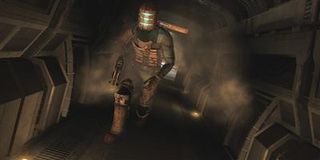
The plot revolves around a group of engineers sent to repair an immense, privately-owned "planetcracker" mining ship called USG Nishimura. Naturally, a terrifying alien presence has taken over the ship.
"We've got some twists in the story - my hope is that you pick it up and understand all the nuances," says Schofield. "Games used to be, 'Okay we've got a fun game here, let's write the back story later.' But with this one the story is key, it's what's going to pull you through. You'll learn just enough the first half hour that will make you want to keep going. And you'll probably spend more time in the first two levels than you will watching The Thing!"
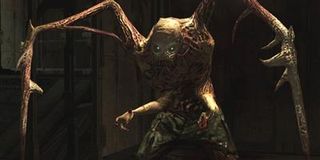
The look and feel of the game will be created by a graphics engine designed completely in-house by Schofield's team. "We wanted a look that we couldn't get with other software," he says, "and we didn't know if we could do good zero-G in them! There is a tendency for games that use an off-the-shelf engine to have very similar lighting schemes or whatever. We had to write a lighting system that's completely different from other games: we have dynamic lights and fire really looks like it's moving properly."
To find out more, visit the official site at http://deadspace.ea.com , where there are more pictures and video clips, or check out the review in the next issue of SFX .
SFX Magazine is the world's number one sci-fi, fantasy, and horror magazine published by Future PLC. Established in 1995, SFX Magazine prides itself on writing for its fans, welcoming geeks, collectors, and aficionados into its readership for over 25 years. Covering films, TV shows, books, comics, games, merch, and more, SFX Magazine is published every month. If you love it, chances are we do too and you'll find it in SFX.
Most Popular




